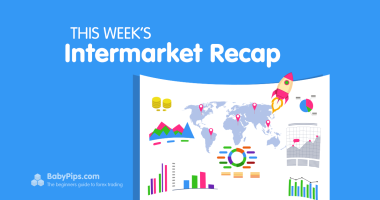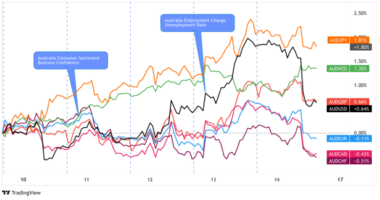Learn To Trade CFDs With Confidence
What is CFD Trading? CFDs are derivative financial instruments. These ‘Contracts for Difference’ are priced according to the underlying financial instruments they represent. The broad categories of CFDs include stocks, commodities, indices, forex, and cryptocurrencies. Pretty much any financial instrument that can be traded in the market is available in this particular format. With CFD trading, you can speculate on the future price movements of assets. One of two outcomes is possible: The price of the asset can rise over time, or the price of the asset can fall over time.
With CFD trading, you agree to exchange the difference in the price of the underlying asset at the point at which the contract is initiated versus the time when it is closed. CFDs can be traded to the upside, or the downside – it’s your call. This is notably different from traditional trading or investing where asset price appreciation is a prerequisite for profitable trades. With CFDs, you don’t take physical possession of the assets in question, you simply trade a contract that mirrors the price movements.
It all begins with a careful and methodical analysis of the financial instruments in question. Macroeconomic variables such as interest rates, inflation rates, unemployment rates, and general economic performance play a part in decision-making processes. Company financials are equally important components in the assessment of CFD performance. For example, you may be interested in trading oil CFDs, Apple CFDs, USD/EUR CFDs, S&P 500 CFDs, or any other commodity, stock, currency, index et al. The availability of CFD trading options may vary from platform to platform, but the fundamentals of trading CFDs remain the same.
Today, I’d like to examine 5 important rules for trading CFDs online. Let’s take a look!
- Pick a Reputable Trading Platform
In my years as a professional trader, I’ve had the distinct advantage of ‘peace of mind’. Not because all my trades finished in the money – on the contrary. It’s because I fully vetted the trading platforms ahead of time. Check for things like licensing and regulation, credibility, availability of financial instruments, real-time pricing updates, rapid executions of trades, a full suite of trading tools and resources, technical and fundamental analysis, leverage and margin, attentive customer support, and ironclad security protocols. These are the most important aspects of a reputable trading platform. Consider them a benchmark whenever you are searching for a tried and trusted trading platform.
Avoid superlatives, and Too Good to Be True offers from any trading platform you register at. Promises of guaranteed returns are patently false. CFD trading is a high-risk proposition with the majority of traders losing money. What many of these platforms don’t tell you is that around 70% – 80% of all traders end up losing money with CFDs. It’s a volatile market with whipsaw price movements all the time. When leverage is added to the picture, it is possible to lose more than your investment in any given trade. Always read the fine print. Trust objective reviews of trading platforms on external review sites, not all those ‘in-house’, ‘on site’ glowing commendations. This is your money – make it work for you.
- Use Leverage with Caution
If you’re new to the trading world, leverage is something that needs to be explained and understood. Perhaps you’ve used a car jack to raise your car while changing a tire? That’s leverage right there. You are using your strength a.k.a. your capital, with additional power (the hydraulic lift) to achieve a much bigger result. With CFD trading, it works similarly. You are using your capital, and buying power from the broker to open substantially larger positions than your capital would allow. A leverage amount of 10 to 1 indicates that for every €1 of your capital, you will have purchasing power of €10. If the leveraged amount was 50 to 1, that means that every €1 of your capital has € 50 worth of buying power. What are the risks of leveraged trades?
Recall at the beginning of this post, I indicated that there are two possible ways a trade can go: A profit or a loss. When your trades finish in the money (ITM), leverage is your friend since it multiplies your profits. But, when your trades finish out of the money (OTM) then leverage becomes problematic. You will not simply be liable for the capital that you invested in any given trade; you will be liable for the full amount of the trade if it turns against you. That’s why leverage should be used with caution. Even the smartest minds make mistakes, or the market simply doesn’t cooperate as intended. Use leverage values that you feel comfortable with, but don’t go overboard. A way to mitigate leverage is careful and methodical research of all trades you open. It’s not a guarantee of profits, but it’s a better way to trade.
- Trade Sizing
Everyone’s budget is different. You may be a casual trader with a small budget, a swing trader, a day trader, or simply a high-frequency trader. Whatever your trading style, trading preferences, or trading budget, it’s imperative that you size your trades correctly. Metrics are used to determine what percentage of your available capital should be used on any given trade. Assuming a budget of €5,000, how much should you allocate to any given CFD trade? The jury is out on this one, but I like to keep the numbers low. If you assume that any given trade should be no more than 1% – 2% of your available capital, you will risk at most €50 – €100 on any trade. Bear in mind that leverage of 10 to 1, or 50 to 1 will multiply your liability if a trade goes against you.
Let’s take a real-world example in USD,
You want to buy 1000 share CFDs of XYZ stock priced at $10 per share.
Your exposure is 1000 X $10 = $10,000.
If the margin requirement (the reciprocal of the leverage) is 10%, then you need to front 10% of $10,000 = $1000. Now, if you have $5000 in your account, this particular trade indicates a 2X portfolio leverage. As the margin requirement drops from 10% to 9%, 8%, 7%, 6%, 5%…, So the amount of capital you need to front decreases, but your portfolio leveraged amount on every one of those trades increases. Carefully assess the leverage and the trade size to minimise your potential losses and liability.
- Understand Bullish and Bearish Prospects
In any form of trading, there are bulls and bears. The bulls have positive expectations vis-a-vis price. They expect the price of the financial instrument to rise over time. With CFDs, a bullish position indicates that the future price is higher than the price you open the contract. The difference between them represents your profit. With bearish prospects, the future price must turn out to be lower than the price at which you initiated the contract. You buy back the contract for the cheaper price, pocketing the difference. This is the basic premise of how a CFD works. Bullish trading is known as going long, and bearish trading is known as going short. If you are trading oil CFDs, and you expect global supply shortages to raise the price of crude oil, you would go long on crude oil. If excess production is expected to flood the markets with more crude oil, you might decide to go short on oil CFDs.
- Rules for Hedging with CFDs
Hedging is another important trading concept. Think of a hedge in your garden for example. It serves as a buffer between your home and the outside. In a sense, CFD hedging is a form of protection too. For a hedge to work effectively as a CFD, you must have another trade or investment open on a trading platform. For example, assume you have Google stock and you’d like to protect your Google stock from downward pricing pressures.
With a standard investment, falling prices translate into losses. But if you hedge your Google stock and trade CFDs to the downside a.k.a. you sell short, you can protect your portfolio. Overall, you may not win when hedging, but you certainly can limit losses on a successfully-hedged trade. The goal is always to mitigate losses. There are many other tools you can use for risk mitigation, including:
- Stop-Loss Orders
- Take Profit Orders
- Methodical Planning
- Portfolio Diversification
And there you have it, folks! 5 rules for trading CFDs. They do not guarantee profitable outcomes, but they certainly will make you a better trader over time.









